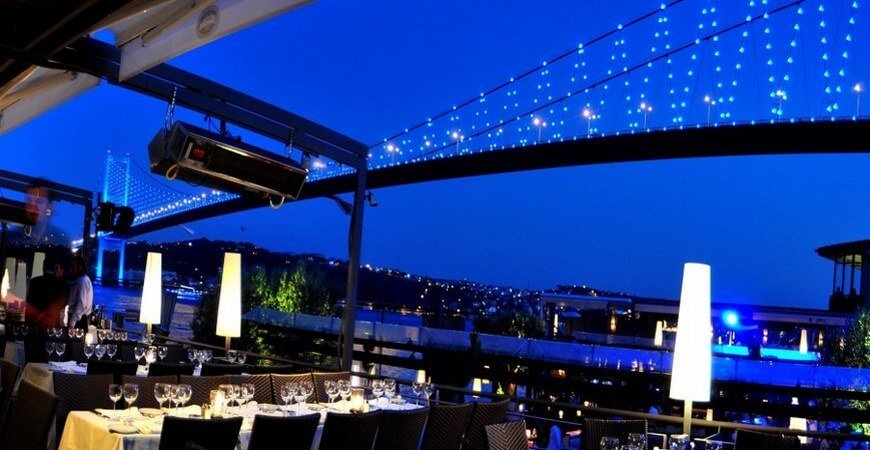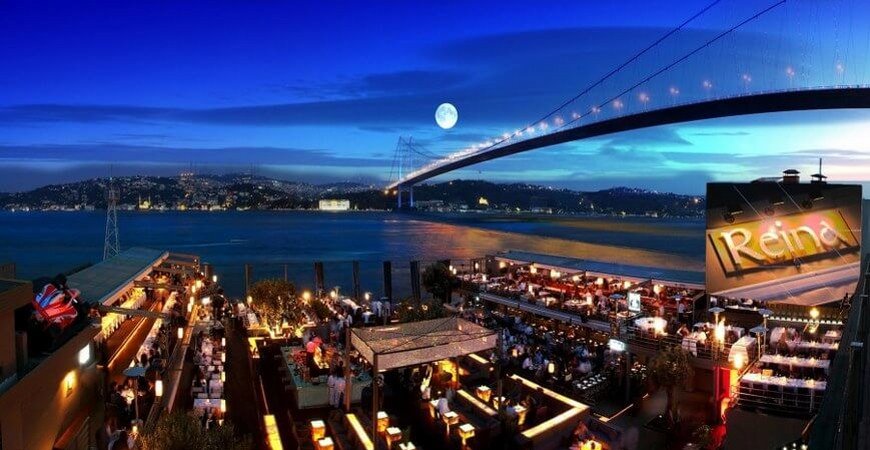Author: erkan
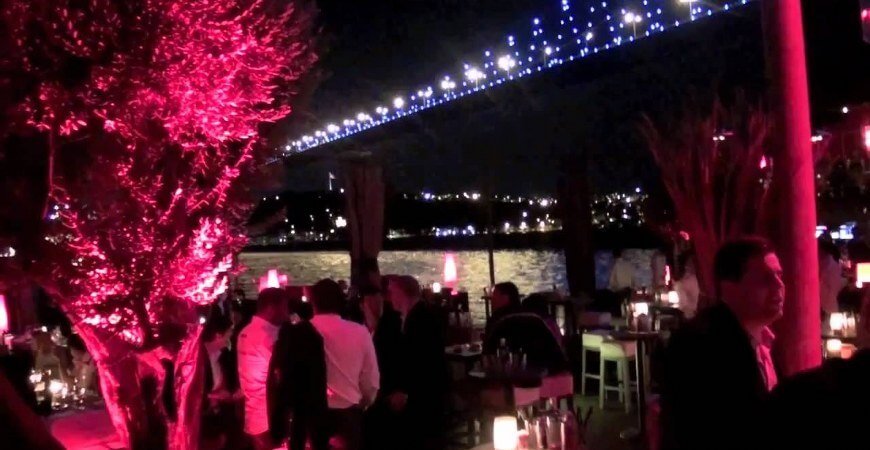
What to do and where to observe New Year in Istanbul?
The way into a lively New Year festivity in Istanbul is the correct lodging decision. Remain as near as conceivable to Beyoglu of Nisantasi.
New Year Parties in Istanbul 2026: Celebrate the Magic Between Two Continents
Istanbul New Year 2026 promises an unforgettable experience filled with dazzling lights, Bosphorus views, live music, fireworks, and delicious Turkish cuisine. Whether you’re looking for an elegant Bosphorus cruise, a rooftop countdown, or a lively party in one of the city’s clubs, Istanbul transforms into a city of endless celebration when the clock strikes midnight.
Table of Contents
- Why Celebrate New Year in Istanbul?
- Best Places to Celebrate New Year’s Eve 2026
- Join a New Year Bosphorus Cruise Party
- Rooftop Bars & Restaurants with the Best Fireworks Views
- Nightclubs and Street Parties in Istanbul
- Family-Friendly Celebrations
- Travel Tips for Your Istanbul New Year Holiday
Why Celebrate New Year in Istanbul?
New Year’s Eve in Istanbul is truly unique because it combines Europe’s cosmopolitan energy with Asia’s warmth and charm. As one of the world’s most vibrant metropolises, Istanbul offers an incredible mix of nightlife, culture, and history. On December 31, every corner of the city—from Taksim Square to the Bosphorus shore—glows with excitement.
Locals and visitors gather to welcome the new year together. Restaurants offer special New Year’s menus, streets are decorated with glittering lights, and fireworks illuminate the sky above the Bosphorus Bridge. Whether you want an extravagant dinner, a romantic cruise, or a casual night out, there’s something for everyone.
To explore a variety of New Year tours and parties, check out the curated options on New Year’s Eve Istanbul Tours.
Best Places to Celebrate New Year’s Eve 2026 in Istanbul
Istanbul offers many places to celebrate the arrival of 2026. From Bosphorus cruises to luxury hotels and public celebrations, the city lights up with endless energy.
- Taksim Square: The heart of Istanbul’s celebration, where locals and tourists count down to midnight under festive lights and music.
- Ortaköy: Famous for its beautiful mosque and Bosphorus view, this area becomes one of the best spots to watch the fireworks.
- Nişantaşı: Elegant restaurants and chic bars make it perfect for a stylish New Year’s Eve dinner.
- Karaköy & Galata: Trendy neighborhoods with rooftop bars offering panoramic views of the Bosphorus.
- Beşiktaş: Ideal for those who want to mix with locals and enjoy street celebrations filled with music and laughter.
Each district celebrates differently—some with outdoor concerts, others with exclusive parties. You can easily find your ideal vibe, from a high-end gala to a simple New Year’s dinner by the sea.
Join a New Year Bosphorus Cruise Party
One of the most iconic ways to celebrate the New Year in Istanbul is aboard a Bosphorus Cruise. Imagine dining on a luxury yacht while gliding between two continents, surrounded by illuminated palaces and sparkling city lights. As the clock nears midnight, you’ll have the best view of the New Year fireworks over the Bosphorus Bridge.
These cruises usually include live music, DJ performances, unlimited drinks, belly dance shows, and a delicious dinner menu featuring Turkish delicacies. It’s a festive yet elegant way to start the year with joy and energy.
For a premium cruise experience, you can book directly through New Year’s Eve Party Bosphorus Cruise in Istanbul 2026 or its partner experience at New Year Bosphorus Dinner Cruises Istanbul.
As fireworks burst over the city and music fills the air, there’s truly no better place to welcome 2026 than on the waters of the Bosphorus.
Rooftop Bars & Restaurants with the Best Fireworks Views
If you prefer to celebrate on land, Istanbul’s skyline offers countless stunning viewpoints. Many rooftop restaurants and bars host special New Year events with gourmet dining and live DJs. You can watch the fireworks reflect off the Bosphorus while sipping a glass of champagne.
- 360 Istanbul (Beyoğlu): A world-famous rooftop offering a panoramic city view and a mix of international cuisine.
- Mikla Restaurant (The Marmara Pera Hotel): Known for its elegant ambiance and fine dining—perfect for couples.
- Lebi Derya (Galata): Offers fantastic food and a romantic view of the Galata Tower and Bosphorus.
- Vogue Restaurant (Beşiktaş): A sophisticated choice for those seeking a classy New Year’s Eve dinner with a view.
- For more please visit: https://newyearistanbul.net/
Make sure to reserve your table early—these spots fill up weeks before December 31!
Nightclubs and Street Parties in Istanbul
For those looking for a wild night, Istanbul nightlife doesn’t disappoint. World-class DJs, themed parties, and dance floors that stay alive until sunrise are everywhere. Many clubs along the Bosphorus, such as Sortie, Reina (if reopened), and Ulus 29, organize exclusive New Year’s Eve parties with fireworks, champagne, and celebrity performances.
In Kadıköy and Beşiktaş, you can also find cozy bars and open-air celebrations with live bands and affordable drinks. Whether you’re into electronic music or traditional Turkish beats, Istanbul has a party for every taste.
The combination of cosmopolitan nightlife and authentic local charm makes these celebrations unforgettable for travelers from all over the world.
Family-Friendly Celebrations
If you’re traveling with children, there are plenty of family-friendly New Year activities in Istanbul. Shopping malls and hotels host special shows, buffets, and entertainment for kids. The city’s main attractions like the Galata Tower, Miniaturk, and Istiklal Street are also beautifully decorated with lights and seasonal music.
For a relaxed and magical evening, families often choose Bosphorus dinner cruises—a safe and enjoyable environment with entertainment suitable for all ages. Many hotels also offer packages including dinner, fireworks views, and overnight stays to avoid the city’s heavy traffic after midnight.
Travel Tips for Your Istanbul New Year Holiday
Here are a few essential tips to make your Istanbul New Year’s Eve 2026 experience smooth and enjoyable:
- Book early: Flights, hotels, and cruises sell out quickly in December.
- Dress warmly: Istanbul winters can be chilly (around 5–10°C), especially near the water.
- Plan your transport: Public transport runs late, but taxis can be limited after midnight.
- Exchange money: Some venues only accept cash in Turkish Lira.
- Be on time: Many parties and cruises start around 20:30–21:00, so arrive early to secure your spot.
By planning ahead, you can make the most of your New Year celebrations in Istanbul and start 2026 in one of the world’s most spectacular cities.
Final Thoughts: Welcome 2026 in Style
From the sparkling waters of the Bosphorus to the vibrant streets of Beyoğlu, Istanbul New Year 2026 offers a celebration unlike any other. Whether you join a Bosphorus New Year’s Eve Cruise or dance the night away at a rooftop bar, the city’s charm will make your evening unforgettable.
So raise your glass under the fireworks, enjoy the rhythm of Turkish music, and feel the joy of welcoming a brand-new year in one of the world’s most enchanting destinations.
Start planning now—your unforgettable New Year in Istanbul 2026 awaits!
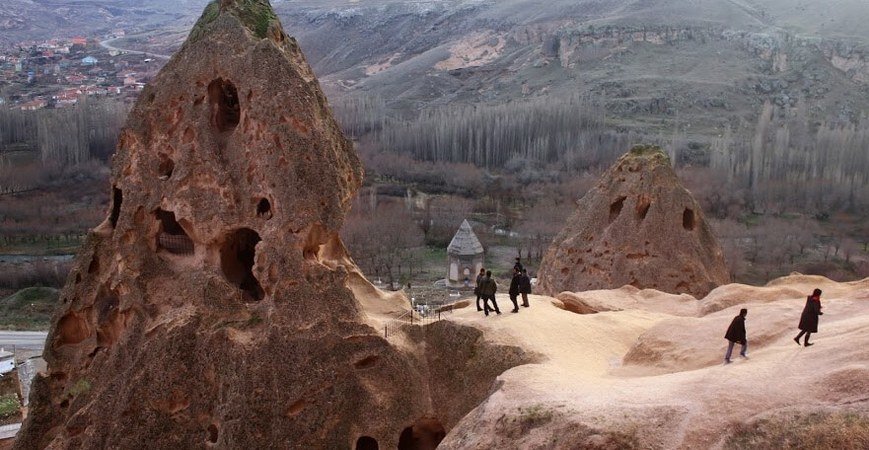
Cappadocia Soganli Valley and Seljuk History
Cappadocia Soganli Valley and Seljuk History,
Soganli Valley
Soganli lies in a valley 25 km. to the east of Derinkuyu and 65 km. to the southwest of Urgup. It is supposed to have been once called Sondos. But a popular story has it that this town was the last place taken during the Arab invasion. After Battal Gazi had taken many parts of the region he told his followers that he had left this place for the end. So after its capture, it was called Sonakaldi (left for the end); this name gradually changed during the centuries and became Soganli. In an interesting valley Soganli has approximately 150 churches of which many are filled with earth. Others have been turned intopidgeon lofts. Among those that can be visited Yilanli Kilise (Church with Snakes), Saki’ Kilise (Hidden church), Meryem Ana Kilisesi (Church of the Virgin Mary), Karanlik Kilise (Dark Church), Tokall Kilesi (the Church with the buckle) and Kubbeli Kilise (Domed Church) are the most noteworthy. Definitely worth a visit is Kubbeli Kilise with its three levels. This place is as interesting as Goreme itself.
Seljuk History And Works
By the foundation of the Anatolian Seljouk State, by the Turkish Principalities which began to enter Anatolia in the mids of the 11 th. Century stone carving besides ceramic thing, and carpetry, gained a great importance and the Seljouks ornamented every part of Anatolia with mosques, medreses, tombs and caravanserais. The masterpiece of the Anatolian Seljouks reached the summit of art in the 12th. Century. Konya Karatay Medreses, the Medreses with slim minaret, Sivas Gok Medreses, the double minaret medreses in Sivas again, and many other medreses, caravanserais and mosques are samples of them. Nigde Alaaddin Mosque Hudavend Hatun Tomb. Sungurbey Mosque, Kayseri Huand Hatun Mosque and Medreseh, Doner Kumbet (Turning Tower), Sultanhan (Inn) between Kayseri and Sivas, Karatay Han (Inn) in Karadayi Village between Tomarza and Bunyan, Sultanhan (Inn) between Aksaray and Konya, Apkarahan (Inn) and Alayhan (Inn) between Nevsehir and Aksaray Sanhan (Inn) located 7 km. eastern part of Avanos are the Seljouk masterpieces within the borders of Cappadocia. The Seljouk State became weaker in the 12 th. Century and at the end of the century, the rapidly developing Western Principalities such as Germiyan Ogullari, Aydin Ogullari, Mentese Ogullari, Karaman Ogullari and many other Ottoman Principalities founded the Ottoman Empire with the help of some Turkman Principalities. They also kept Anatolia as a Turkish territory and carried in the same art works.

Kayseri History Information | Cappadocia Turkey
Kayseri History Information | Cappadocia Turkey,
Kayseri is one of the larger towns of central Anatolia (pop. 207.000). It adjoins the provinces of Yozgat and Sivas in the north, of Adana in the south, of Maras in the east and of Nigde and Nevphir in the west. The history of Mazaka (as. Kayseri was called in earlier times) goes back to 2000 B.C. The terracotta tablets with the cuneiform script on them, the statues and other artifacts which were unearthed at KOltepe situated 22 km. to the northeast of Kayseri are proof of its importance as a Hittite town. These artifacts, kept now in the museums of Kayseri and KCiltepe, are the first of their kind discovered in Anatolia. We understand from the tablets that Kayseri was an important Hittite center of commerce and that even Assyrian merchants came here to trade. Kayseri was ruled also by the Romans, and later by the Byzantines. Various monuments and temples were built here in Roman times and coins were minted in the name of the Roman emperor; such coins, most of them bronze, are frequently found in the region. After the spread throughout Cappadocia, including Kayseri, of Christianity, all such temples and monuments were destroyed by the Byzantines. When the Byzantine Empire started to decline, various races invaded the Kayseri region. During the advance of Islam in this direction, the region was invaded several times by Arab armies (690-726 A.D.). After the battle of Manzikert (1071) the Seljukids captured it. Later it was conquered by Emir Gazi. The Seljuk sultan Kilij Arslan II took Kayseri back from the Danishmend in 1174, and under his rule, the town flourished and many buildings were added to it. Most of the still surviving monuments in Kayseri date back from this period the mausoleum of Hunat Hatun, Hatun mosque, the medrese of Hunat Hatun, the “revolving dome”, Kilij Arslan mosque, K010k mosque, Kurshunlu mosque are the more important among them. Beside Kayseri, the Seljuk’s had baths, inns, medreses, mosques, and caravanserais built in many other towns. They are all decorated with beautiful works of art. The finest building surviving from the Seljukid period is the Sultan Han (Inn), 50 km. from Kayseri, on the Sivas highway. It was built by Aladdin Keykubad at a time when Seljuk’s art had reached its zenith; the carvings at the main gate and on the chapel are particularly beautiful. Kilij Arslan II later divided his kingdom among his sons and he himself went into retirement at Konya. But the power struggle among his sons, which followed this partition, grew to such dimensions that they even marched against him. Kayseri was added to the Ottoman state in 1399 by Yildirim Beyazid; after his defeat at the Battle of Ankara, Timur (Tamerlane) destroyed the whole town, razing even the citadel to the ground. Kayseri was later ruled by the Dulkadirogullai and the Karamanogullari; it was the latter who rebuilt the citadel. After the battle between the Karaman ruler, Pir Ahmed, and the Ottoman sultan, Mehmed the Conqueror, Kayseri again became part of Ottoman territory but fell into neglect until the foundation of the Republic, since which time it has been enjoying a continual growth.
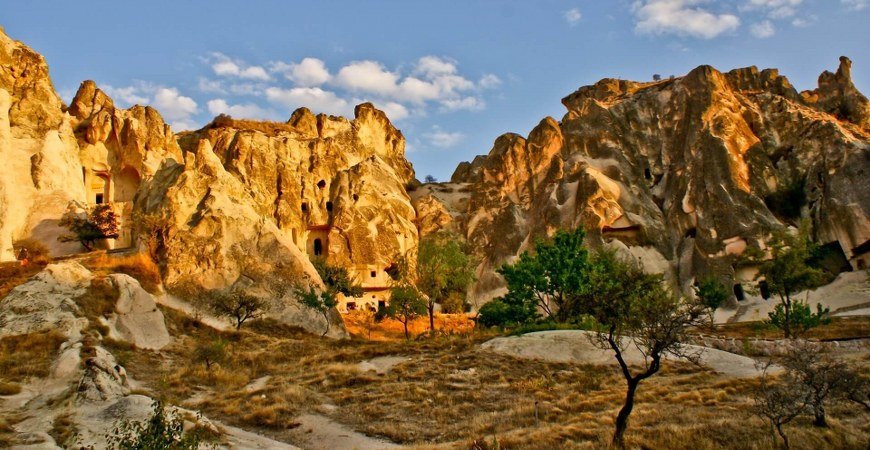
Nigde City Information | Cappadocia Turkey
Nigde City Information Turkey,
Nigde
Nigde is a town (pop. 30.000) in the southern part of Cappadocia, and the town went into a decline. Today, the main places of interest rest to the west of the road. It also dates from the Hittite period; from tablets found in the village of Andaval in the province of Nigde, and now preserved in the Archaeological Museum in Ankara, we learn that they called it Nahita. In 1976 a basrelief made of hard black stone depicting a Hittite god was unearthed in Nigde at a construction site near Kigili Mosque and is now in the local museum. On the stone, there is a cuneiform script, a figure of a God holding an ax in his right hand and a lightning in his left. We see grapes on the lower left-hand corner and a sheaf of wheat on the lower right-hand corner. After 710 B.C. NiOde fell under the Phrygian rule and various artifacts of that period attest to this. Though the Phrygians were followed by the Romans, very little has been found indicating their presence. In 53 A.D. Christianity began to expand fast in the region, but Roman persecution of Christians caused the converts to build underground cities at Misli, Tirhan, Hasakoy, Orhanli and Edikli in the vicinity of Nigde, similar to those at Derinkuyu, Kaymakli, KiraOcapr, BelOren, KizilOren, Tilkoy, Cekmi, Orentepe, Goble, Cakilli, Dogala, Suvermez. I believe that, apart from these, there are about hundred underground cities in Cappadocia, serving the double purpose of places of refuge for Christians and of centers for missionary work. In 313 emperor Constantine granted recognition to this religion which started propagating all over the world.
Nigde was part of the Byzantine territory from 395 to 1075, after which date it remained in Seljukid hands until the middle of the XIII century. Upon the accession of Aladdin Keykubad I to the Seljukid throne, the governor of Nigde, Zeyneddin Beshare, had a mosque built in the sultan’s name. This mosque, which is still in use, is known as Aladdin Mosque and is noted for the stone carvings, both on the interior and the exterior walls, and for its mihrab, mimbar, and main door. The reign of Aladdin Keykubad (1219-1237) is the most glorious period of the Seljukid State, during which time medreses, inns, puplic baths, mosques, and caravanserais were built and decorated with beautiful examples of their art. With Aladdin’s successor, Giyaseddin Keyhusrev, the Anatolian Seljukid state began to decline. During this period the Mongols, at that time in possession of Persia and the Caucasus region, started threatening also the already weakened Seljukid State and finally took this opportunity to invade Anatolia. In 1243 at Koseda0 near Sivas the Seljukid army was defeated and the Mongols imposed an annual tax on them and later annexed the territory. A number of Turkman princes reacted by declaring their independence from the Seljukids and NiOde was held successively by the Ilhanids, the Karamanlids, and the Ottomans. It was also invaded by the Sasanids and the Arabs. The devastation caused by these invasions and wars was too vast to be repaired and the town went into a decline. Today, the main places of interest for the tourist in Nigde are:
1 — Aladdin Mosque
2 — Sungur Bey Mosque
3 — Rahmaniye Mosque
4 — Various Mausolea
5 — Ak Medrese
6 — The Citadel.
Eski Gumus Nigde
Six km. to the north-east of Nigde, there lies a Byzantine monastery carved into the rocks. The courtyard in front has rooms to its west and southeast, and the monastery to its north. The church dates from the X or the XI century; its dome rests on four large columns. It has three niches in its eastern part and a chapel in the part facing the north. The niches are decorated with pictures of Christ, S. Mary, and the Saints, another niche has a lifelike fresco of Virgin Mary with Christ in her arms. In the south of the courtyard, there are entrances to underground passages which are now blocked.
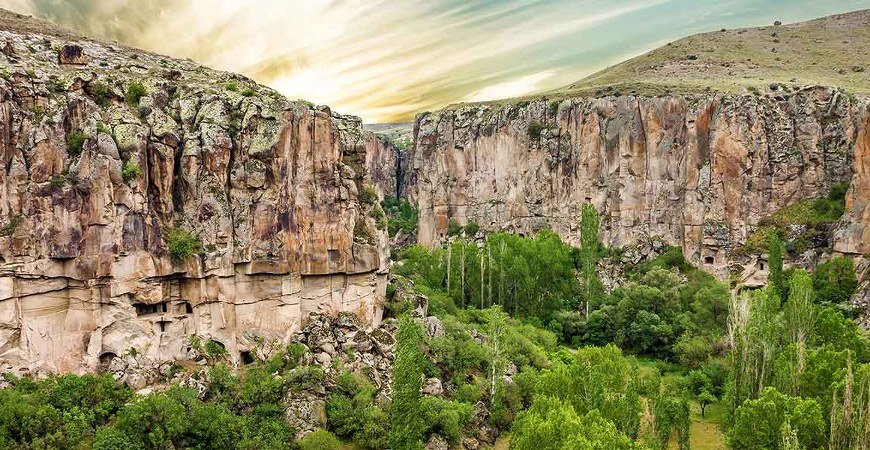
Ihlara Valley in Cappadocia Turkey
Ihlara Valley in Cappadocia Turkey,
Ihlara is reached by starting on the Nevehir-Ankara Road, then turning left at Km. 58 and driving for 40 km. It can also be reached from Derinkuyu by a much shorter road; it also lies on the Derinkuyu-Aksaray road (40 km). The 150 mt. deep Ihlara valley which is formed by erosion caused by the Melendiz River, is a place of great natural beauty containing hundreds of churches and it attracts thousands of admiring tourists every year. The mummy of a young girl found in 1960 in this valley is now in the museum at NiOde. The most beautiful churches along the stream of Ihlara, which extends as far as Belisirma, Yaprakhisar and Selimiye, are:
1) Yilanli Kilise (The Church with the snakes)
2) Agacgalti Kilisesi (The Church under the tree)
3) Sumbullu Kilise (The Church with the Hyacinthes)
4) Kirk Damalti Kilisesi (The Church under the Forty Roofs)
5) Bahattin Samanlig’i (Bahattin Barn)
Yilanli Church:
It is shaped like a long cross; in its western part, a grave has been excavated. On the wall in that part are pictures showing Michael judging people according to their sins and their good deeds. Immediately to the right is a picture showing sinners in the coils of snakes. The dome shows Christ and the angels: in the south-eastern part, we see Virgin Mary’s death. The church contains also pictures of the Last Supper, of Virgin Mary, of Saints and Angels.
Agacalti Church:
It is shaped like a cross and is older than the other churches but its frescoes have been relatively well-preserved. On the wall facing the door, we see Daniel between two lions and on the ceiling a dragon.
Sumbullu Church:
It is also shaped like a cross; its frescoes date from the XIV century.
Kirk Damalti Church:
Certain Biblical stories appear in its frescoes, among them the murder of Zacheriah.
Guzelyurt (Kalveri-Gelveri)
This town, situated in a valley in the Northern skirts of Hasan mountain at the southwestern part of Cappadocia, is 15 km away from Ihlara and 40 km. away from Derinkuyu. It appears from the ceramics found at the High Church and at the valley in the western part of the town, that the history of this town dates back to old times and that it was one of the most important market centers during 2500 B.C. The settling of the Prehistoric Age remains today without changes and people continue a life intermingled with past history. Some sources state that THEOLOGOS, who made the calendar which replaces the Persian calendar used in Anatolia before Christ, was born in Nazianzli (today called Nenezi) and that theologian Gregorios was born in Kalveri (today called Guzelyurt) and that
Kalveri became a religious centre after Gregorios was declared a Saint. Prehistoric settings before Christ, rock churches, and chapels, Rock Mosque, Great Church, High Church belonging to the period of after Christ is very interesting. Ceramic art in Guzelyurt was so developed that it still continues nowaday and the pots and other earthenware from Gelveri are very famous in the region of Cappadocia. The earthenware made here is different in form and structure from the ones made in Avanos, and are made from fire resistant soil. At the location of fox path and Pinarca two underground tunnels were found, but they are still blocked. Although village people say that one of the tunnels goes towards Ihlara stream and the other towards Hasan mountain, this remains uncertain.
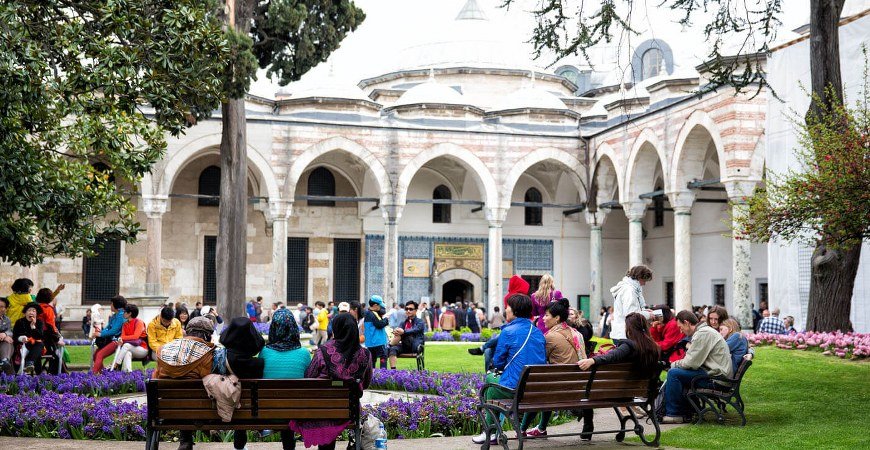
Topkapi Palace Museum Sections in Sultanahmet Istanbul
Topkapi Palace Museum Sections in Sultanahmet Istanbul,
The Aviary:
This is the kitchen where the sultans’ food was prepared.
Section Of Iranian And Italian Brocades:
The paved court and bathhouse of the Ward of the Agas, which was in a rudimentary style rebuilt after a fire in 1856, have been preserved. In the Ward Iran-Ian and Italian brocades are exhibited. In addition musical instruments, sets of Karagoz puppets and a rich collection of European watches and clocks can be seen here. Together with these a valuable collection of Turkish clocks and watches has been gathered together.
Kubbealti (Council chamber):
The organization of the Divan, which played N very important part in the direction of the state, goes very far back. We saw earlier that there existed building for the meetings of the Divan in the days If the Conqueror. The present building was erected dining the reign of Suleyman. The political, military, financial and even judicial affairs of an empire spreading over three continents were regulated by orders, decisions, and firmans originating under the three domes of this building. A golden sphere hanging from the imam dome attests to the fact here was decided the fate of the world. Here the reception of ambassadors took place, and occasionally state banquets were given. The viziers of the Dome numbered from five to nine. It is the addition the Commanders of Rumela and Anatolia, the Defterdar (Finance Minister), the Minister of the Book (Foreign Affairs), attended the meeting of the Divan, which was subject to a great deal of ceremony. After the Conqueror, the sultans followed the deliberations of the Divan from behind a grilled window. This building was restored in different periods of Ottoman history, and having remained in ruin for a long time was finally rebuilt in recent years.
Palace Coaches And Saddles:
The building which houses the palace coaches and saddles today is divided into three sections: The first part is the old palace stable. This six-loofah century building was transformed into dormitories for the Baltaez in the eighteenth century. Still, under it was cut up into a number of rooms for the gardeners and other servants. With time it became dilapidated and was in part burnt down. Having undergone repairs it now houses the coaches of recent times, bridles, stirrups, whips and a number of postchaises.
Imrahor Room (The Master Of The Horse):
The Master of the Horse was an important functionary. The sultans were traditionally fond of horses and frequently came here to watch the thoroughbreds go through their paces. The stables were therefore built with these visits in view and were pro-vided with a coffee hearth and even lavatories. When these were removed the beautiful plasterwork of the period was restored. Subsequently, the building WIIK used under Mahmut II for the game, and under h Aziz for the saddles of the princes.
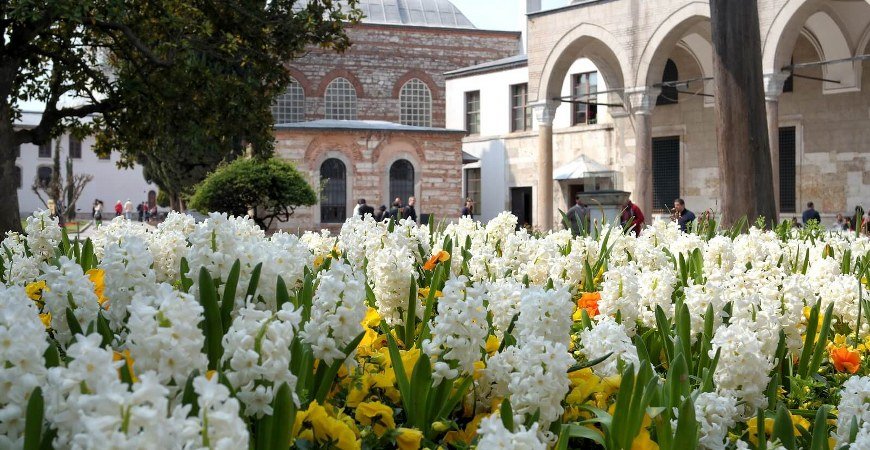
Istanbul Topkapi Palace Museum Sections
Istanbul Topkapi Palace Museum Sections,
Picture Gallery:
The pictures exhibited in the three halls on the second floor of the same building are for the most part portraits of Ottoman rulers, of some of the sultanas end princes and of great statesmen of the Empire. There are works of the Italian, French and Spanish schools and also works by Turkish artists. In addition, there is a precious collection of miniatures of Ottoman rulers and personalities by such well-known miniaturists as Sinan Bey, Nigiari, Osman, Naksai, Levni and Abdullah.
Section Of Turkish Velvets And Brocades:
This building was formed by walking in the portico of the Apartment of the Mantle of Felicity and houses an imposing collection of Turkish velvets and brocades from the fourteenth to the nineteenth centuries, arranged in chronological order. Some of the gold brocades woven in special workshops for the sultans are finer than anything of the sort to be found elsewhere. The colors and the motifs used are endless in variety and show great skill and maturity.
The New Library:
This building, better known as the Mosque of the Akas, probably dates from the time of the Conqueror. A small mosque was added to it later, and it was al-so connected with the mosque of the Harem. When the Museum has founded thousands of books and inscriptions removed from the Kiosk of Revan and Bagdad lay in cases in the Treasury. These were moved to this mosque, in company with the contents of the libraries of Medina, of Mehmet V and of Tiryal Hanim, each of which however is cataloged separately. Works added library after this date from what is k atm ii as the New Collection. There are now 10, 623 manuscripts and 3739 printed books various languages in these collections, many (4 which are incunabula or are rendered, unique Hick. bindings by their miniatures or other illusralimis.

The Sections of Topkapi Palace Museum in Istanbul
The Sections of Topkapi Palace Museum in Istanbul,
The Pool:
There are many pools in the Saray grounds but this particular one, situated in front of the Revan and Bagdad Kiosks and of the Apartment of the Mantle of Felicity, is of special note, because of the attractiveness of the jet in the middle and the jets-d’eau on either side.
Circumcision Room:
This room, built in the time of Sultan Ibrahim is very simple in plan, but its marble door frames, the beautiful tile panels of different periods which ornament its walls and its charming wall fountains carved with tulips render it well worth a visit.
Guards’ Treasury:
In this building, which dates from the Conqueror, swords and aigrettes are kept. The Bagdad Kiosk, interior view.
Apartment Of The Mantle Of Felicity:
This building, which is similar to the Hall of Petitions in plan and which is surrounded by a portico, is thought to have been originally constructed in the days of the Conqueror. The extremely valuable tiles on its. walls, however, were placed there during Murat II’s ill The building was restored several times, down the lime of Mahmut II, and the Prophet’s Mantle was moved from the lower story where it was kept, to a building constructed beside the dormitory. In the apartment of the Mantle of Felicity were kept Hilly the Prophet’s mantle, but also his bow, his words, his standard and his epistles, as well as words and other historical relics belonging to certain air disciples. The scabbards of these swords are examples of magnificent workmanship.
Section Of Turkish Embroideries:
This was the old Treasury and assumed its present form in the nineteenth century. The three halls of the I tried. floor house a collection of Turkish embroideries ‘winning with the sixteenth century. The success in color and composition achieved in the embroideries made in the villages illustrated the Turks, innate artistic ability. Nevertheless, the collection also includes articles specially made for the palace and worked in gold thread and colored silks by the best embroiderers of their time: belts, handkerchiefs, gowns, covers, napkins, towels, prayer rugs, pillowcases, turban cloths, moneybags, etc. etc. The second hall contains embroidered leather works, and the third some of the tents found in the palace depots.
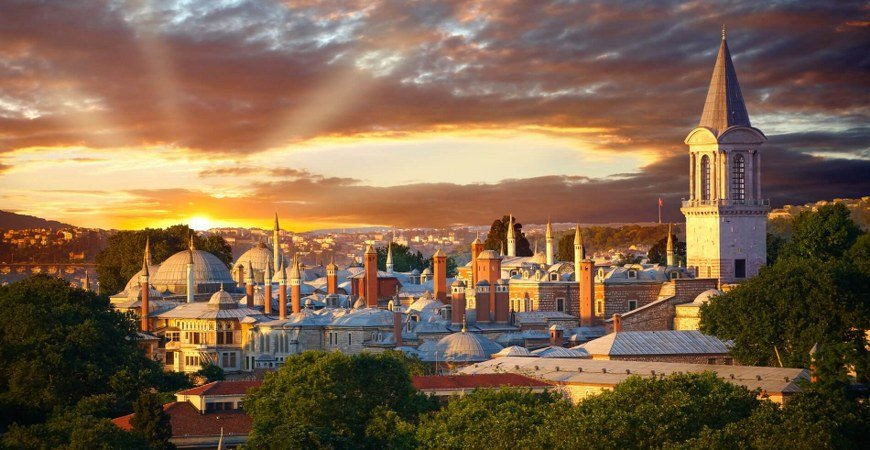
The Harem Section of Topkapi Palace Museum in Istanbul
The Harem Section of Topkapi Palace Museum in Istanbul,
THE HAREM
The section of the Harem, which was first founded by the Conqueror, was constantly added to until to-day. It contains some two hundred and fifty rooms divided into various apartments, a few kiosks, two mosques, six bathhouses, special treasuries and even a hanging garden. The main building gives some idea of the architecture and interior decoration, as well as the manner of living, of many periods. It is difficult not to get lost in this labyrinth, in every corner of which Ono is reminded of some historical episode. Below are some of the more important subdivisions:
a) The reception rooms, the eunuchs’ apartment, the school for princes, the chamberlains’ quarters, the chief eunuch’s quarters, a mosque and a hammam.
b) The living quarters, hamam and infirmary of the odalisques and of the head servants.
c) The princess’ quarters.
d) The Valide’s apartments. (The Valide was the mother of the reigning sovereign).
e) The apartments of the bash Kadin, or chief concubine.
f) The apartments of the favorites.
g) The apartments of the heir and the independent building are known as the Cage.
h) The apartments of the Sultan. There is also an interesting hammam, to which various sultans have made additions, which consists of numerous rooms and reception rooms.
WARD OF THE BALTACI OR HALBERDIERS
A unique group, consisting of sleeping quarters, mosque, bathhouse, school, and fountain, all built of wood.
STONE INSCRIPTIONS
Inscriptions carved in marble during various epochs existed in scattered fashion in the cellars and gardens of the Saray. These have been collected into four groups:
a) The Tugras, or monograms, of the sultans, from Osman III., The final period. The Ottoman coat of Imam Iri in this group.
b) Description from kiosks and palaces once situ-dol in 4110 Saray grounds but now no longer in existence.
c) Inscriptions concerning pious foundations made within palace grounds by palace inmates.
d) Inscriptions from fountains built by order of the sultans or members of the imperial household.

Parts of the Sultanahmet Topkapi Palace Museum
Parts of the Sultanahmet Topkapi Palace Museum,
The Enderun Library
Going out from the Audience Chamber the visitor faces a many-domed marble building built by Ahmet III in 1718 in order to house the palace library. Previously on the same spot stood a kiosk with fountains, built by Selim II. The plaster reliefs on the domes and vaults of this building are among the masterpieces of the period. Its walls are decorated with sixteenth-century tiles brought from the Yali of Kara Mustafa Pasha. There are 4787 manuscripts in the library, of which are in ancient Greek and Latin.If those latter are adorned with miniatures and drawings. The majority of the remainder are in Arab-i and many are rare works on history, geography, intoplicine and religious mysticism.
The Enderun School
This building, where many grantrifitteftrIfigh admirals and important statesmen were trained and in whose rooms artists and musicians gained experience, has seen many transformations. It was burnt down in 1857 and restored only within recent years. It is now used for Museum offices. In the vicinity of this building was a small pavilion also used as a classroom. The school of Galata Saray was founded by Bayezit II as an outlet for this school.
The Commissary
This building was originally constructed during the reign of the Conqueror, but was restored in flu nineteenth century and is now used as an office building.
The Sofa Mosque
Underneath the Commissary is a vaulted passage which leads to the fourth court. Here stands a simple mosque with a single minaret, built in 1858.
The Iftariye
This open summer kiosk, which has a magnificent view over theGolden Horn and the entire city, was built in 1640 and consists of a bronze dome supported by four bronze columns. Inscriptions and decorations in gilt relief ornament it. Here congratulations were received and circumcisions, fasts, and entertainments took place.


